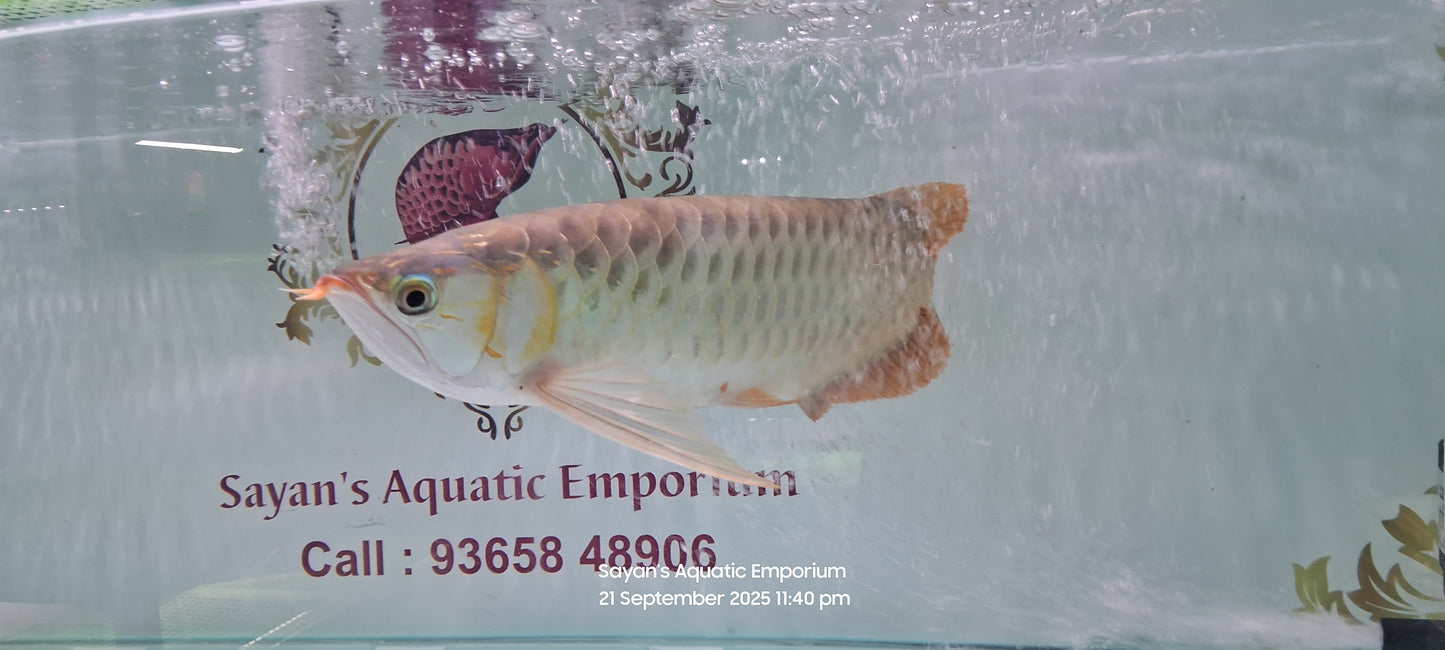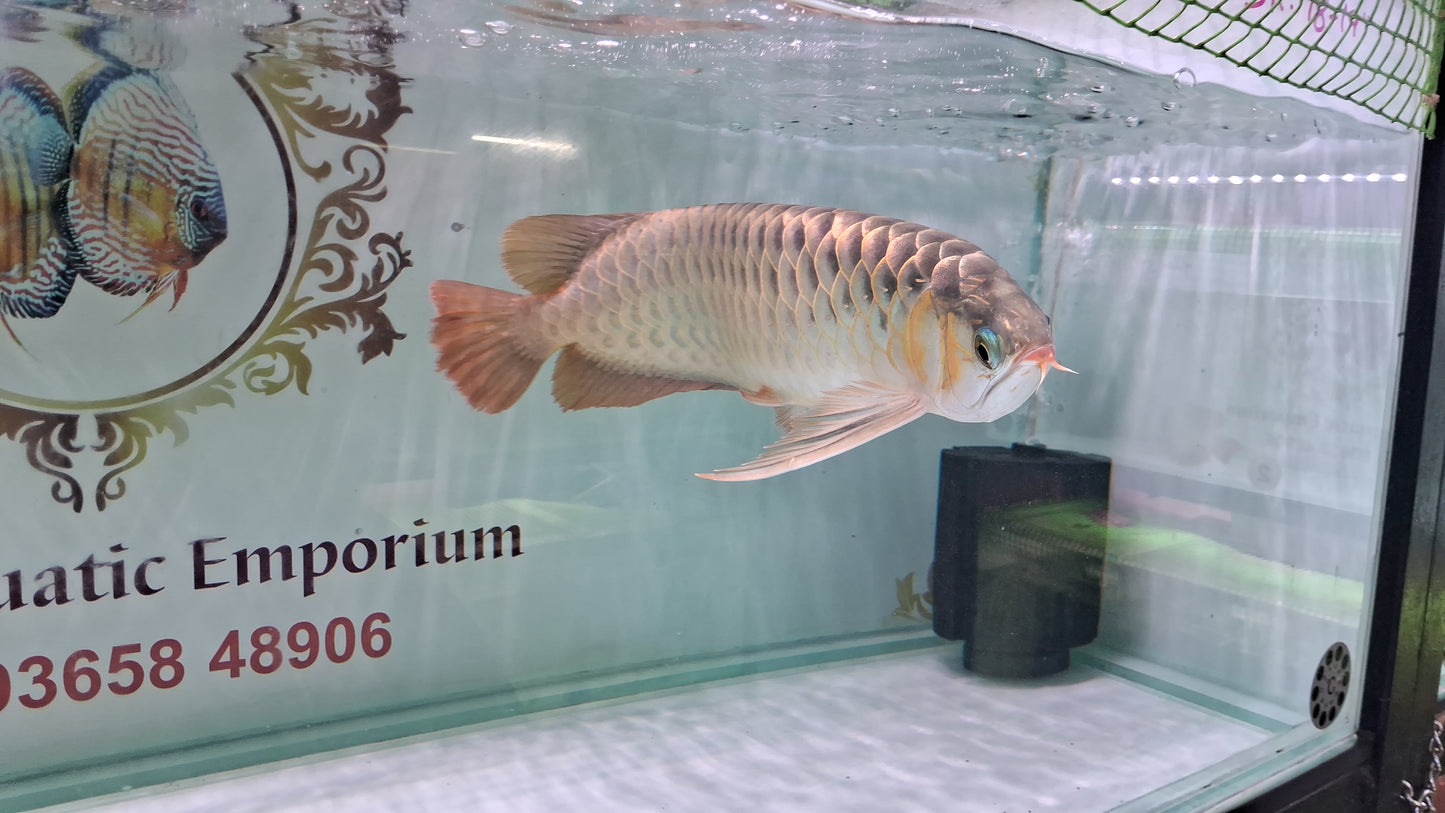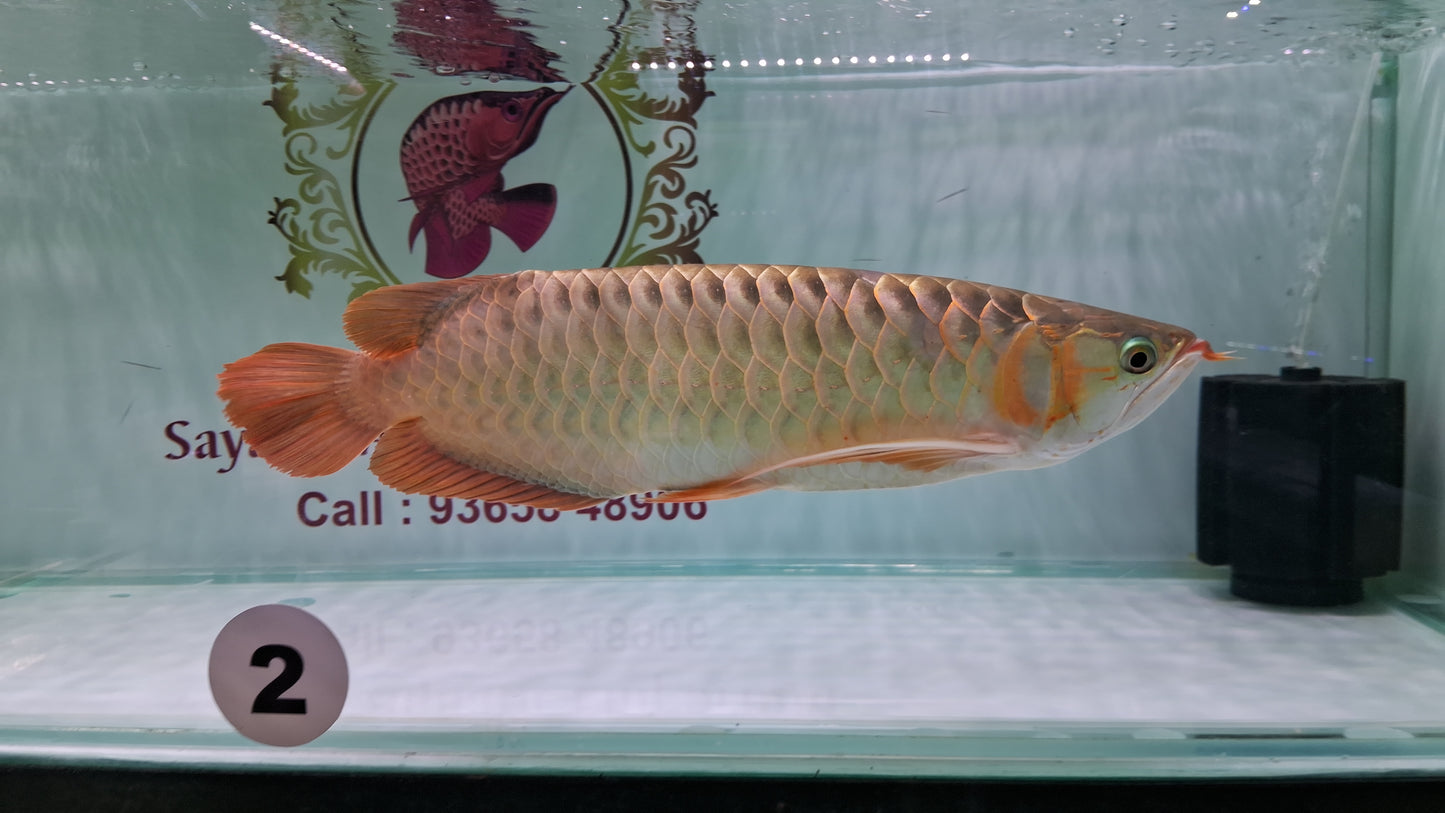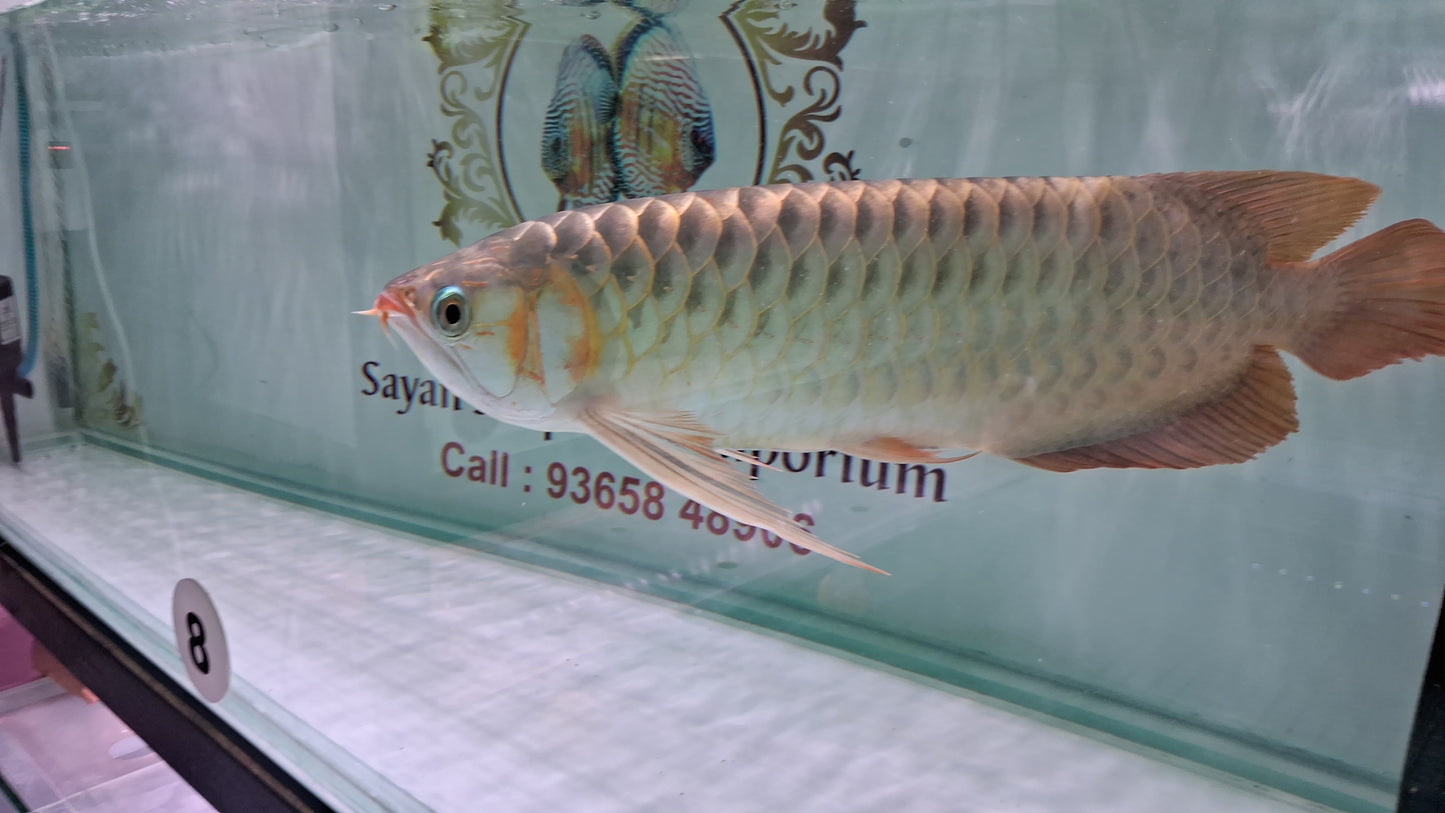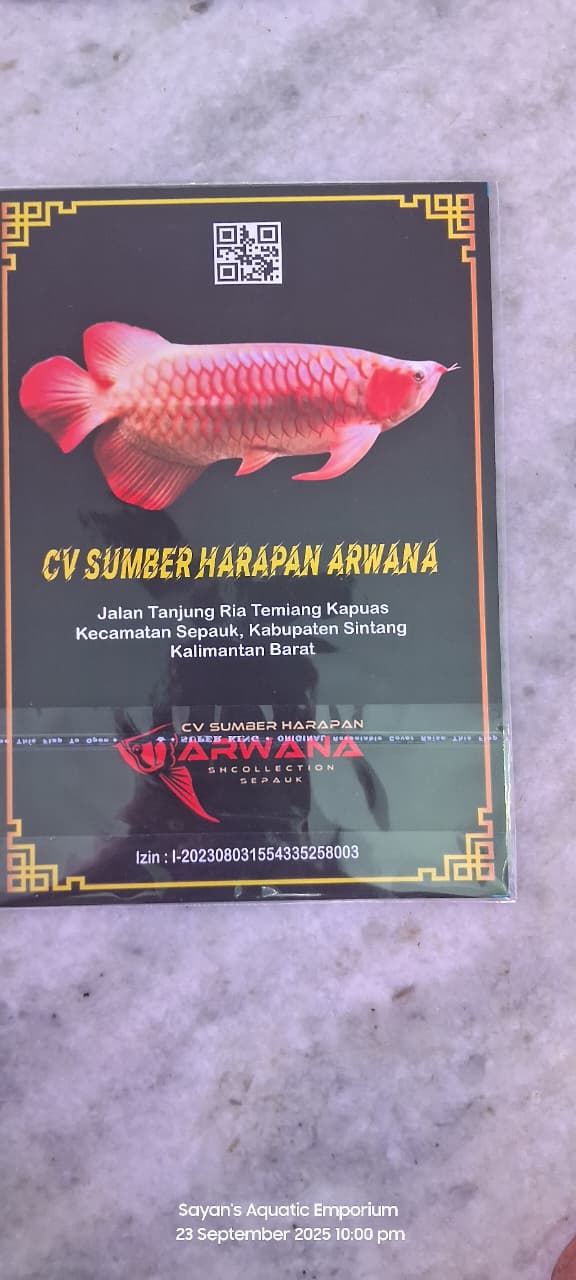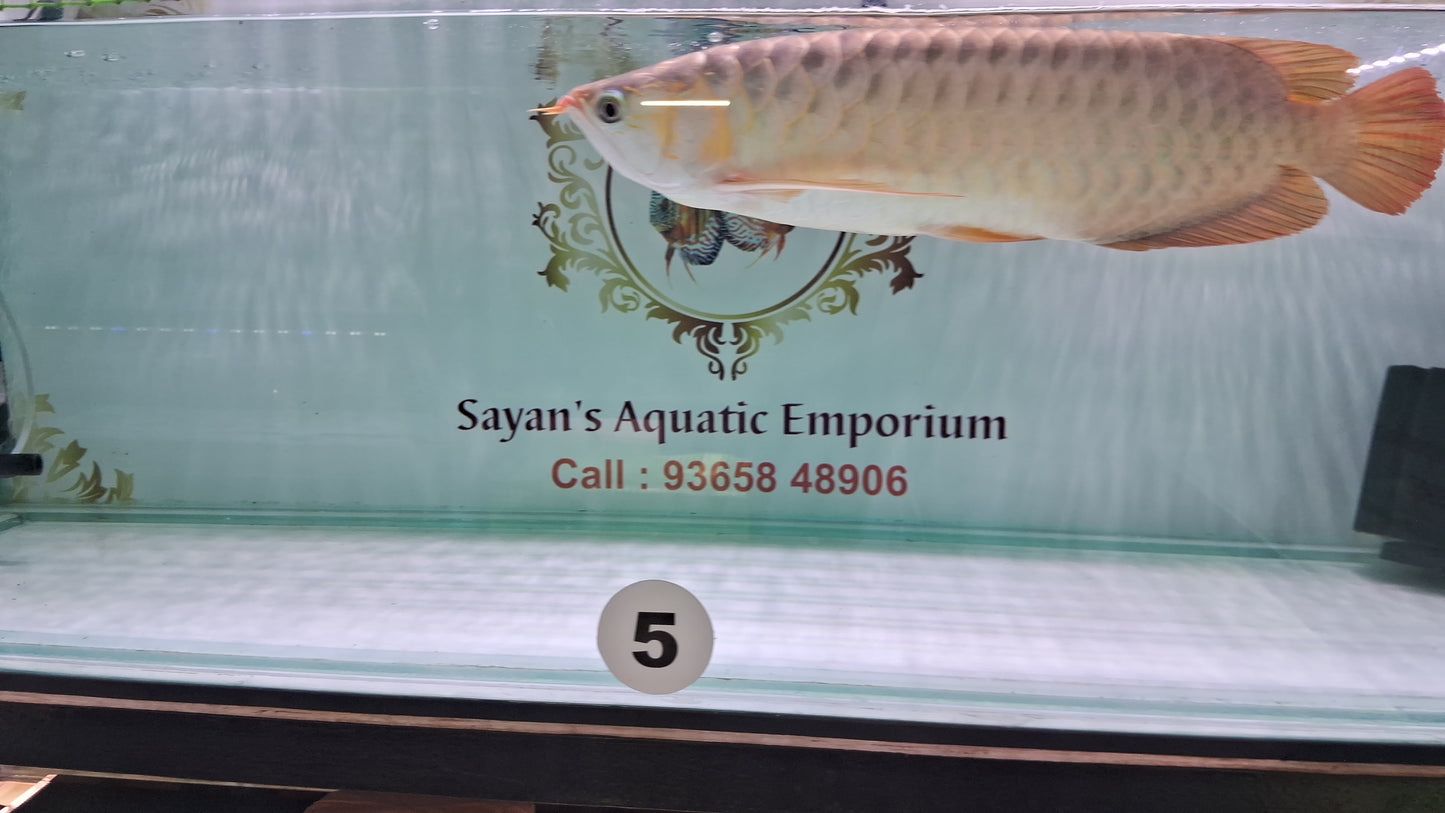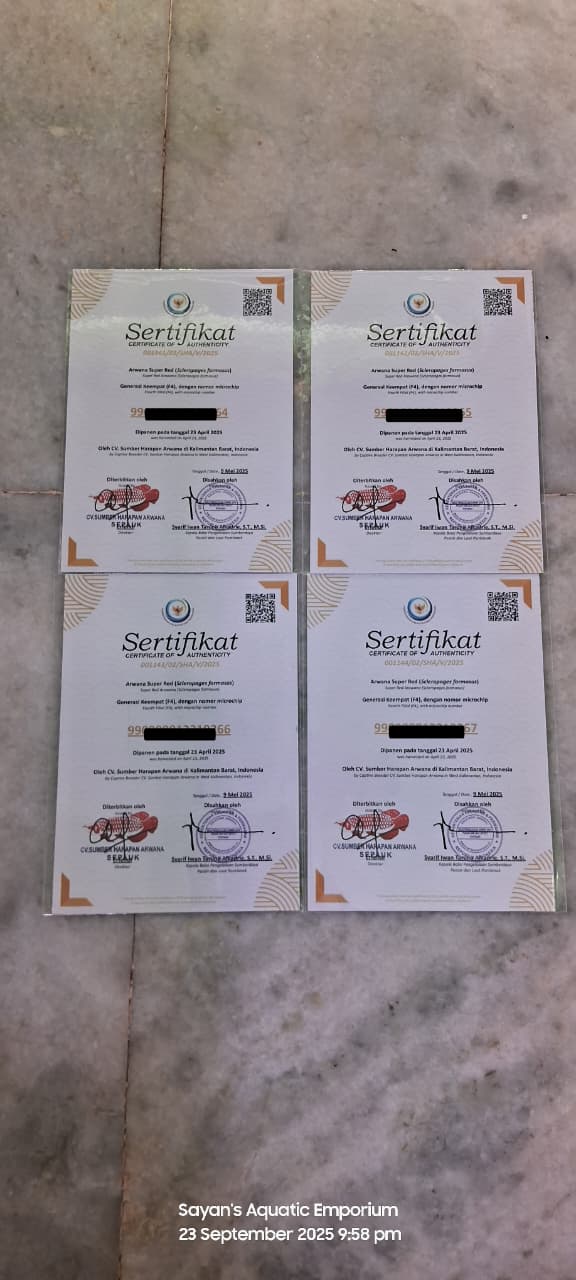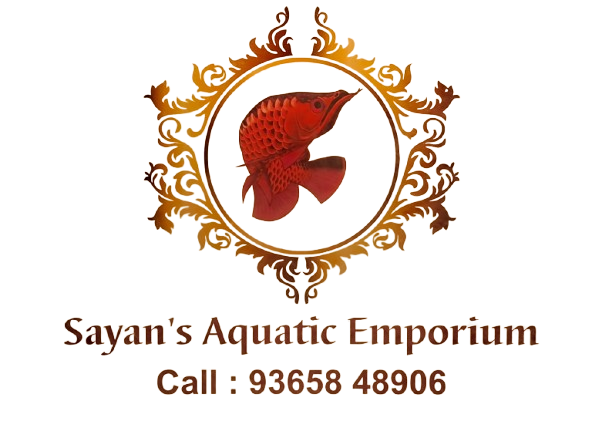SAYAN'S AQUATIC EMPORIUM
Indo Super Red Arowana (Adult)
Indo Super Red Arowana (Adult)
Couldn't load pickup availability
The Indo Super Red Arowana is a popular and expensive freshwater aquarium fish, scientifically known as Scleropages formosus. It is characterized by its beautiful, metallic red scales that intensify with maturity, a long, slender body, and large fins. Native to Southeast Asian rivers, particularly in Indonesia, it is seen as a symbol of luck and prosperity in Chinese culture. These carnivorous and territorial fish require large tanks with secure lids, good filtration, and a protein-rich diet, making them best suited for experienced aquarists.
Key Characteristics
Scientific Name: Scleropages formosus
Appearance: Features a vibrant, metallic red coloration on its scales and fins as it matures, along with a long, slender body and distinctive barbels on its lower jaw.
Origin: Native to Southeast Asia, specifically rivers and lakes in Indonesia, like West Kalimantan.
Size: Can grow quite large, with potential lengths of up to 35 inches (90 cm) in the wild, though typically smaller in captivity.
Behavior: A solitary, carnivorous fish that feeds on insects, fish, and crustaceans. They are also known for their aggressive nature and territorial behavior.
Cultural Significance: Regarded as a symbol of good fortune, power, and prosperity, especially in Feng Shui.
Care Requirements
Tank Size: A large tank is necessary, with a minimum recommendation of 30 gallons for a starting point, and even larger as the fish grows.
Water Quality: Requires pristine water quality and good filtration to maintain health.
Tank Setup: A secure lid is essential, as they are known to be high jumpers.
Diet: A carnivorous diet of protein-rich foods, such as live or frozen fish and shrimp, is needed.
Temperament: Due to their territorial and aggressive nature, they are best kept alone or with other very large, peaceful fish that can withstand their dominance.
Experience Level: The Indo Super Red Arowana is best suited for experienced aquarists due to its specific care needs, territorial behavior, and large size.
Share
